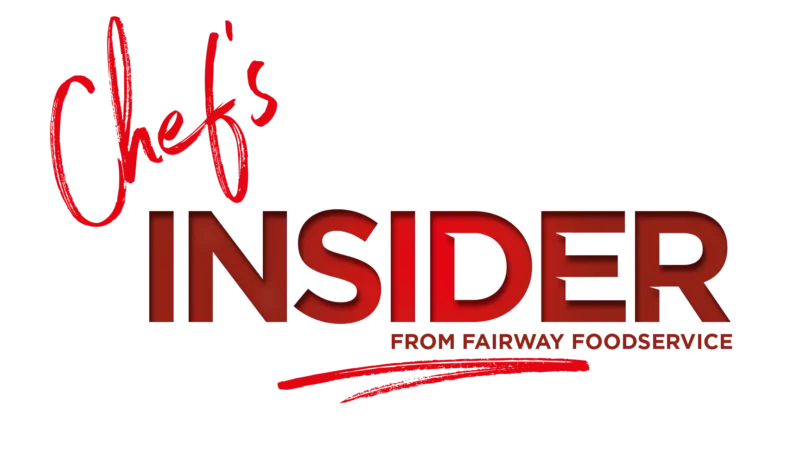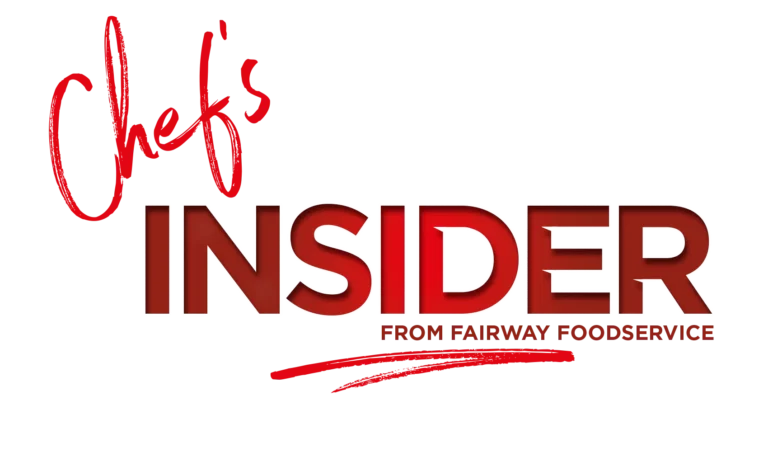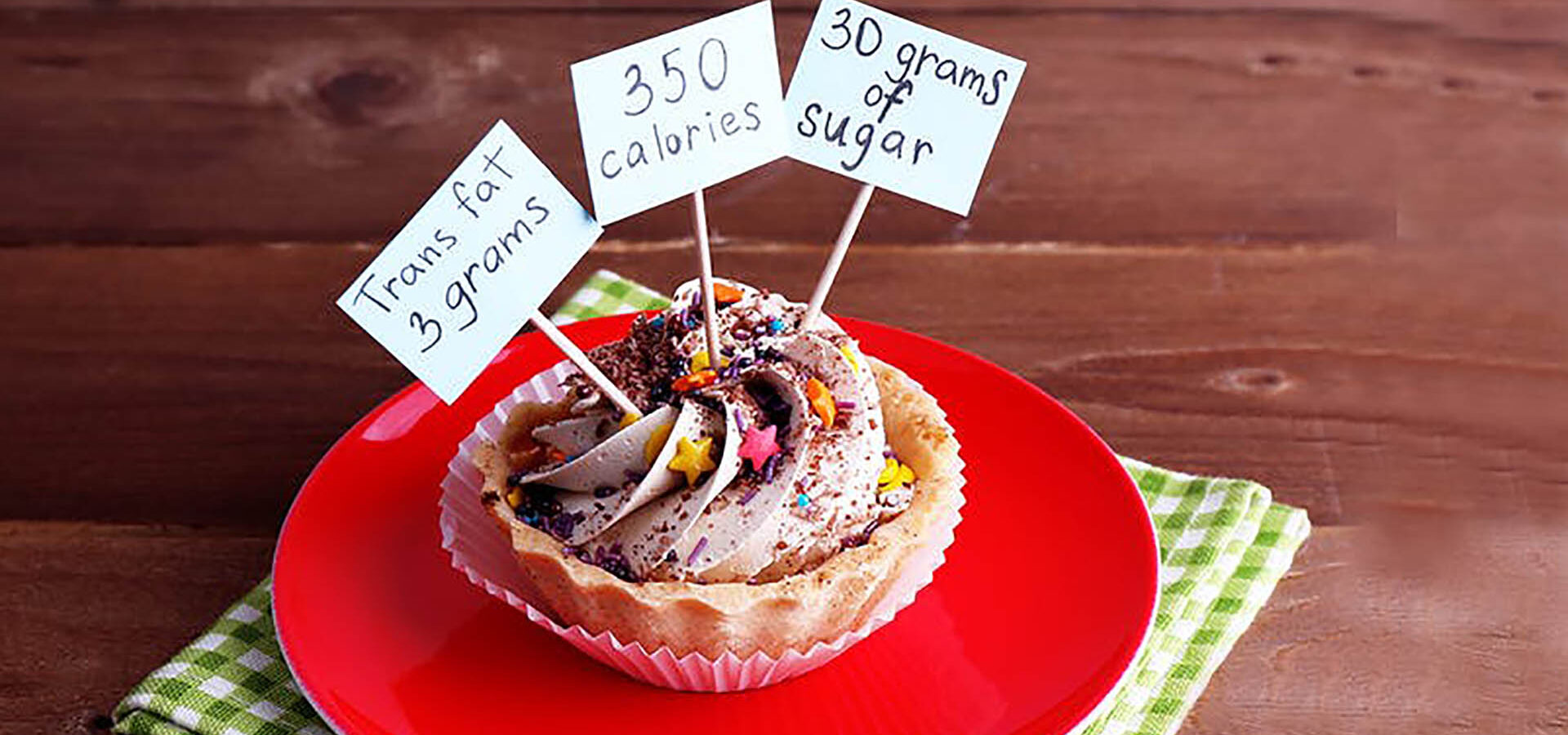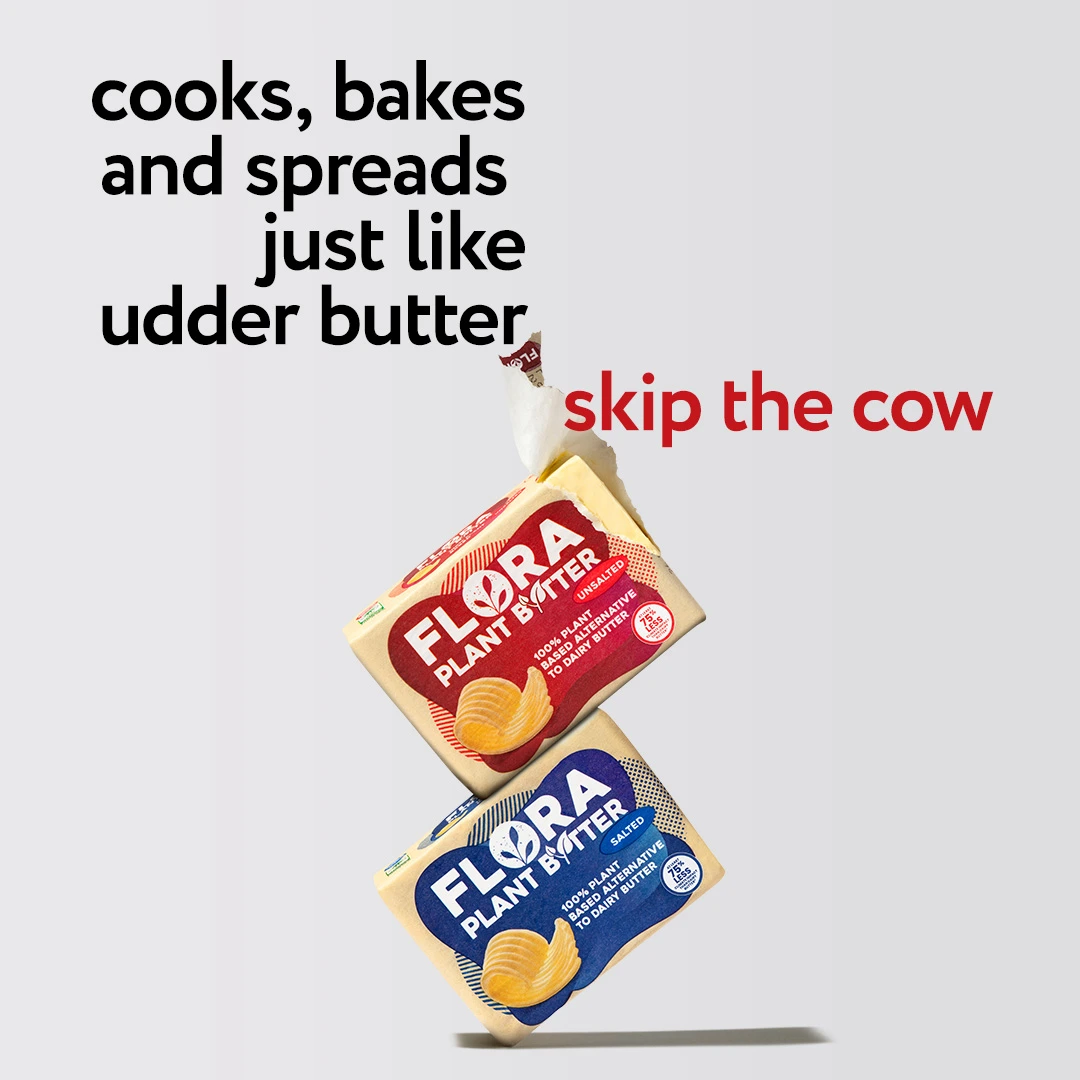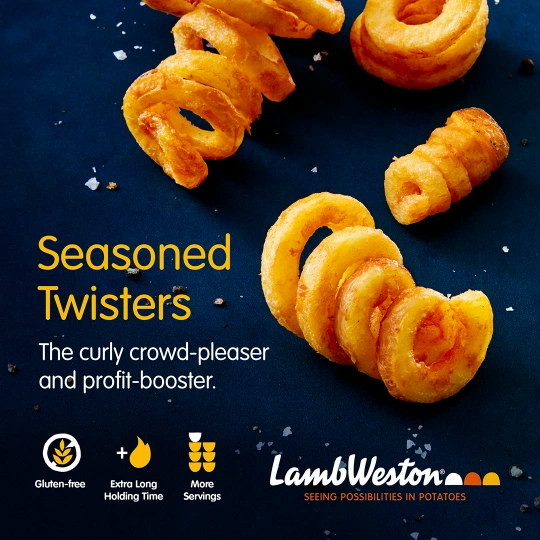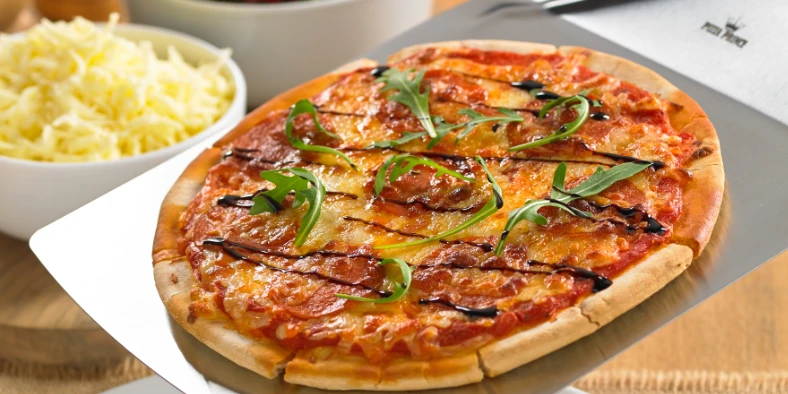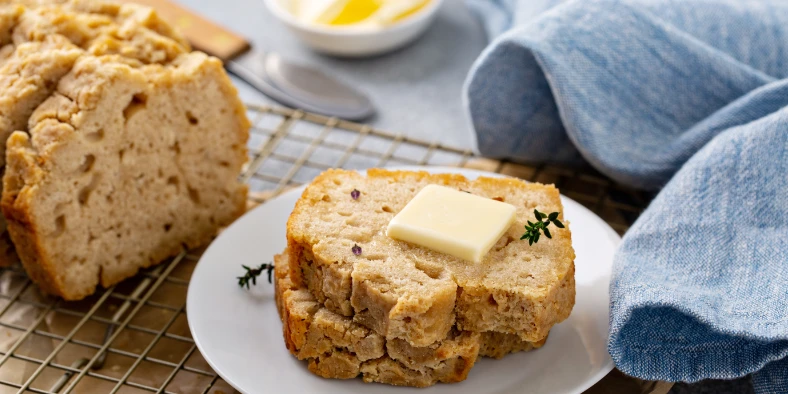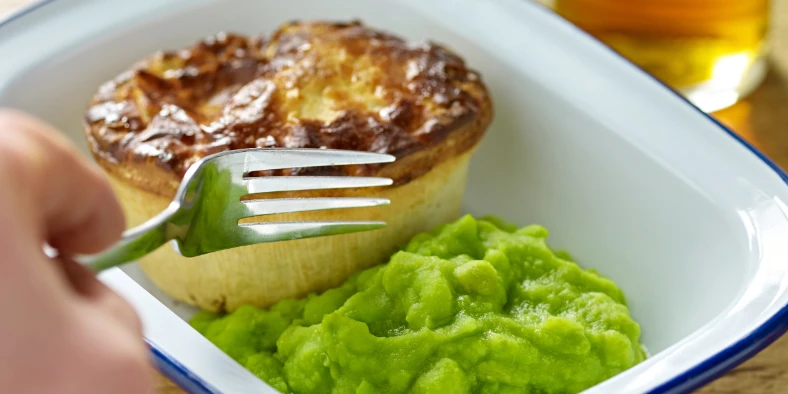Following a government consultation on calorie labelling in 2018, it has been confirmed that Mandatory Calorie Labelling aimed at “tackling obesity” is set to be enforced on 6th April 2022. And we’re here to explain what that means, and how Erudus can help businesses comply…
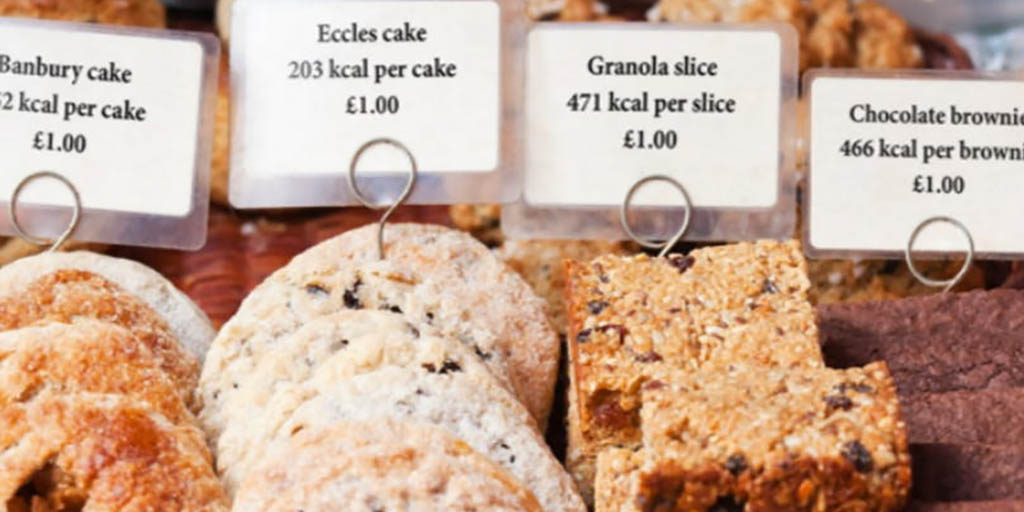
WHAT IS MANDATORY CALORIE LABELLING?
Mandatory Calorie Labelling is a piece of legislation that will be directed towards large food businesses (businesses with 250 or more employees) in the out of home sector – for example, restaurants, cafés, takeaways, bakeries and Caterers.
The aim of the new legislation is to provide accessible information that may encourage consumers to make healthier food choices when eating out. Alongside this, there is hope that introducing Mandatory Calorie Labelling will encourage businesses to make steps towards reformulating the food and drink they offer, and provide lower calorie alternatives.
WHAT ARE THE RULES OF MANDATORY CALORIE LABELLING?
Businesses that qualify for Mandatory Calorie Labelling regulations must do the following for their dishes and food items:
1. Display the energy content of the food in kilocalories (kcal)
The energy content of the food and drink being sold must be calculated in kilocalories (kcal), and be displayed in specific areas depending on where the product is positioned. For example:
- Where food is chosen from a menu – the kcals must be displayed on the menu, next to the description or the price of the food
- Where food is chosen from items on display – the kcals must be displayed on a label identifying the food, next to (or in close proximity to) each item of food which may be chosen, and displayed in a position which ensures that the label can be read by anyone choosing that food
- For Prepacked for Direct Sale (PPDS) foods chosen from items on display, the calorie information may be displayed on the product packaging as an alternative or in addition to a label next to the item. PPDS items that are advertised for sale on a menu must have calorie information displayed on the menu
Whilst the primary menu provided to the customer must have the energy content clearly visible, businesses can provide a menu without calorie information at the express request of the customer.
2. Reference the size of the portion to which the calorie information relates
The calorie information provided must be given per portion (for example per item, per scoop, per slice) and not per weight or measure, and businesses will need to specify the size of the portion that the calorie information is in reference to. Additionally, if an item is prepared for more than one person, the number of people it is intended to serve should be shown. For example, if a whole cake consists of 10 slices but is served by the slice, the calorie information must be provided for that single serving, but it should be noted that the cake in its entirety consists of 10 servings. So the consumer knows they are eating 1/10 of a cake.
That being said, if a product is intended to be a single serving, businesses are not required to state that a single portion serves one, as it is suggested that the product description is sufficient enough.
If a product is chosen by the customer from items on display (e.g. a piece of brownie from a tray of brownies) businesses should make clear reference to the size of the portion to which the calorie information relates (e.g. chocolate brownie = 350kcal per slice).
3. Display the statement that “Adults need around 2000 kcal a day”
Finally, a clear reference needs to be made regarding an individual’s average daily calorie needs. The statement “Adults need around 2000 kcal a day” must be displayed in specific locations detailed below:
- Where food is chosen from a menu, the statement must be displayed once on every page of the menu. Alternatively, where food/drink items are displayed on a menu board – it must be in a position on the board which ensures the statement can be read easily
- Otherwise, the statement must be displayed in a prominent position where it can be seen and read by anyone buying food at the point at which they choose what to buy (e.g. when food is chosen from items on display)
The wording used for this must be the statement shown in quotation marks:
“Adults need around 2000 kcal a day”
This is prescribed by the Regulations and cannot be amended.
The information businesses are required to display must be easily visible, clearly legible, and not in any way hidden or obscured.
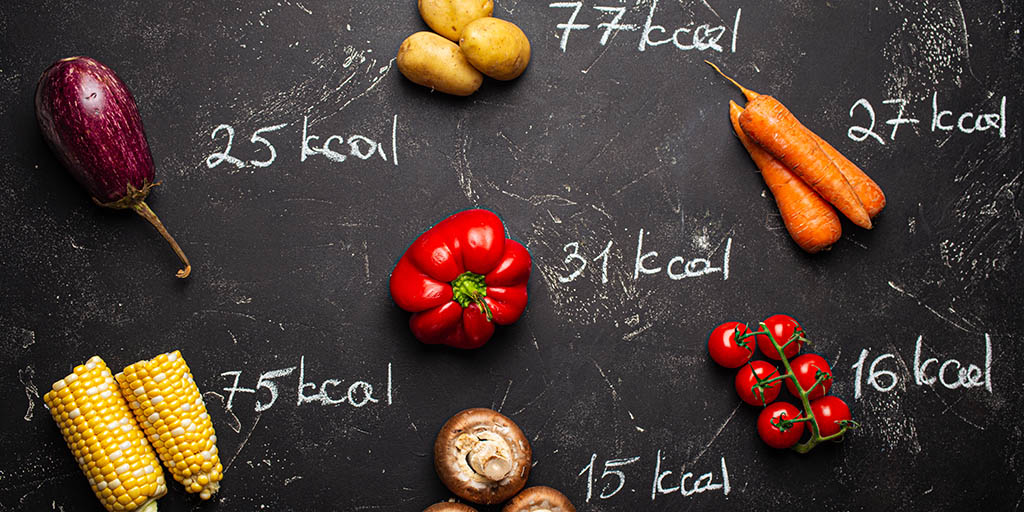
ARE THERE ANY EXEMPTIONS TO MANDATORY CALORIE LABELLING?
There are some foods that are exempt under the new legislation, these have been described as the following:
- Fresh fruit or vegetables – provided that they are not added to other food, or sold as an ingredient in food consisting of more than one ingredient
- Unprocessed products consisting of a single ingredient – note, this refers to foods that do not come under the above category, e.g. herbs, nuts and seeds
- Fish, meats or cheese – provided that they are not added to other food, or sold as an ingredient in food consisting of more than one ingredient
- A loaf of bread or a baguette – note, only bread in these forms are exempt, bread rolls/buns do not fall under the exemption
There are also certain foods for particular audiences that are exempt under the legislation, as follows:
- Food that has been provided by charity
- Food that has been provided at an educational institution for pupils below the age of 18 years old
- Food that has been provided complimentary to patients at a hospital or another medical establishment, or to residents of a care home or other social care institution
- Food served by the armed forces to a member of the armed forces outside a military canteen
- Food that is served on international transport (e.g. on an aircraft, a train or a ferry) to or from a country that is not part of the United Kingdom
More specific examples of products that are exempt from the legislation:
- Foods which are on the menu temporarily (less than 30 consecutive days and a total of 30 days in any year), for example for the Christmas or Easter period
- Foods which are not included on the menu, such as dishes which have been requested by the consumer to be made differently to the way they are usually prepared
- Alcoholic drinks over 1.2% ABV
- Condiments which are provided to be added by the consumer to their food, e.g. coffee syrup (ordered in addition to a regular coffee) or tomato ketchup. This does not include condiments which are part of the food served (such as chutney).
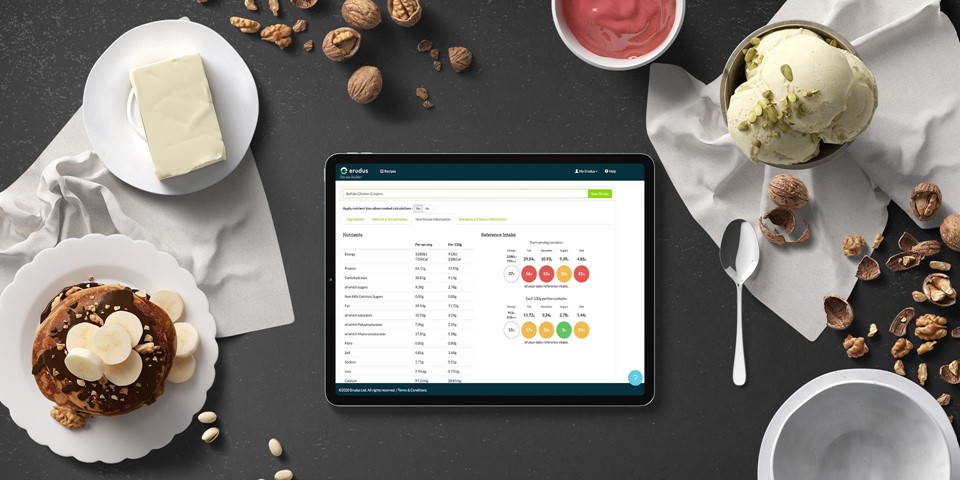
HOW CAN ERUDUS HELP BUSINESSES COMPALY WITH MANDATORY CALORIE LABELLING?
The Erudus Recipe Builder is a tool that automatically aggregates nutritional values, costs and allergy statements as you add ingredients, and summarises your recipe into a single, easy to download and print PDF. It’s the perfect reference for checking and recording the nutritional and allergen content of the dishes you’re serving (by portion or by dish as a whole) and can help you budget your menu too.
Essentially, you can use Erudus Recipe Builder to easily pull together the information needed to comply with Mandatory Calorie Labelling, in a format that’s ready to be displayed on a menu or product label in line with the new legislation.
If you would like any further information regarding the Erudus Recipe Builder please contact our Support team via support@erudus.com, or on 0333 121 89 99.

